My Favourite Thai-inspired Vegetable Curry
Since I last posted a lot of things have happened in my life. The first and most important one was my recent move from Porto to Glasgow. Between preparing and planning all the stuff that involves moving into a different country, I barely had time to cook, let alone blog. However, and now that I’ve been here for a month and got (almost) everything sorted out (housing, burocracy and the likes), I´m happy to resume blogging and do the very best I can to bring you my favourite vegan recipes.
I’ve been thinking a lot about how things will naturally change around here (in terms of photography and recipe content as well) since I’m not in my own kitchen and do not have all the kitchen tools I’m used to. This will naturally affect the kind of recipes I’ll be posting from now on – they will be simpler, and since I do not own a food scale, lack the accuracy I’d like them to have. However, I do prefer to face this as a challenge (and one that I’m happy to take) rather than a limitation. I came to Glasgow with a 20 kg suitcase. I brought mostly clothes, one book, my laptop and my camera. I left in Porto all my cookbooks and the boards, plates and cutlery that have helped me build this blog’s photography identity over time. I’m already missing my bedroom’s blue wall, the wall that was the background of most of the food pictures I posted here for the last 5 years. But I’m also a firm believer that things happen for a reason. I was probably getting too comfortable with my own style of doing things, and this an opportunity to question that and try new and fresh approaches.
So, let’s talk curry today. I didn’t bring any of my cookbooks with me, but if I could only bring one, I’d definitely go with The Millenium Cookbook. Most of the recipes I cooked from this book were outstanding, and a great number of them have become part of my cooking repertoire. That’s the case with this curry. The original recipe is more labour intensive, and in order to make it simpler and faster I omitted some steps, trying not to compromise too much on the flavour. The recipe might still seem a bit of a project though, but I can guarantee you it’s worth making your own curry “base” from scratch, blending the sauce, and so on. In the end, you’ll have a fantastic curry that feeds a crowd and is definitely a crowd pleaser too. If you can’t come across butternut squash this time of the year, use carrots instead (4 or 5 large ones will do) – I’ve done it before and it works just as well. Also feel free to play around with the vegetables – in the past I’ve tried green beans, broccoli and asparagus and all of them have worked nicely. Hope you enjoy the curry and I’ll be back soon! In the meantime, check my instagram feed for food-related pictures and some suburb memorabilia from Glasgow.
My favourite Thai-inspired Vegetable Curry
Recipe inspired by The Millenium Cookbook
(serves 6, as a main)
*note: I usually use two green chillies with seeds, but I can handle quite a lot of heat. If you’re less tolerable than me, use only one.
For the curry sauce:
2 medium sized onions, chopped
5 large garlic cloves, chopped
1 piece of ginger the size of your thumb, peeled and grated
1 small bunch of coriander
1 teaspoon coriander powder
½ teaspoon turmeric powder
1 teaspoon cumin powder
1 teaspoon sea salt
zest of 2 limes
juice of 2 ½ limes
2 green chillies, finely chopped* (see note above)
1 medium sized butternut squash, peeled, seeded and chopped into cubes
1 can / 400 ml full fat coconut milk
For the curry:
1 Tablespoon coconut oil, melted
1 large sweet potato, peeled and chopped into cubes
1 large carrot, peepled and chopped into cubes
1 small head of cauliflower, cut into medium-sized florets
1 small head of cabbage, thinly sliced
1 lemongrass stalk, tough outer layer removed, bruised in a mortar and pestle (optional)
1 cup / 250 ml water
250 g / 1 package smoked tofu, cubed
For serving:
3-4 spring onions, finely chopped
1 handful of peanuts, toasted
extra coriander, finely chopped
1-2 limes, cut into quarters
For the curry sauce: In a double boiler, steam about ¾ of the butternut squash for 5 to 8 minutes, or until thoroughly cooked. In a high speed blender combine the chopped onions, garlic, ginger, fresh coriander, spices (coriander, cumin and turmeric powders), salt, lime zest and juice, chilies and the coconut milk and blitz until you have a smooth sauce. Working in batches, add the cooked butternut squash to the mixture and blitz until creamy.
For the curry: In a large pot over medium heat, add the coconut oil, the carrot, sweet potato and the remaining ¼ of butternut squash. Sautée for a few minutes or until the vegetables are golden brown. Add the curry sauce followed by the bruised lemongrass stalk (if using) and 1 cup / 250 ml of water and bring to a boil. Once boiling, decrease the heat to low-medium and simmer for 10 minutes. After that time, add the cauliflower, cabbage and smoked tofu and simmer for 5 minutes longer. If the sauce seems too thick, add a bit more water to thin it out to the consistency you like (I like mine to resemble a smooth blended soup). Season with extra salt and serve with the chopped peanuts, scallions, coriander and a good squeeze of lime juice.
Green Monster Soup with Za’atar Toasted Sunflower Seeds
I love a good bowl of soup anytime of the year, but I tend to eat a lot more soup during the cold winter months. Usually people tend to think of soup as the kind of dish where they can throw in as many vegetables as they have lying around in the fridge. I tend to think the opposite actually, and like to take a “less is more” approach when it comes to soup making.
This soup in particular is made with three different greens (spinach, cabbage and turnip tops) and has sweet potatoes and a little amount of rolled oats in it to make it creamier and balance the greens’ natural bitterness. There’s also ginger for some heat, and a crunchy seed topping to keep things exciting. I usually make this soup using solely cabbage and chard, but I couldn’t find the latter this week on the market, so I just replaced it with spinach and turnip greens.
Turnip greens are very easy to find in Portugal, but my (little) travel experience tells me it’s not an ingredient that’s easily available in other parts of Europe. If you can’t find them, use chard instead. I’d just advise you against making this an all spinach soup – maybe it’s just me, but I find spinach a little bitter (specially the new Zealand variety, which is the one I’ve used here) and that’s why I like to pair it with another green partner. I want to thank all of you who visit this blog regularly and wish you a wonderful new year. I’ll be back soon. In the meantime, eat your soup! :)
Green Monster Soup with Za’atar Toasted Sunflower Seeds
serves 4
For the soup:
2 Tablespoons olive oil
230 g / 1 large thinly sliced onion
5 garlic cloves, minced
23 g fresh ginger, peeled and grated
240 g / 2 medium sweet potatoes, diced
225 g / half a medium sized cabbage, thinly sliced
25 g / ¼ cup rolled oats
5 cups water
225 grams spinach leaves
180 g turnip greens
¾ teaspoon salt
½ teaspoon freshly ground nutmeg
For the za’atar toasted sunflower seeds
55 g /1/3 cup sunflower seeds
1 teaspoon olive oil
1 teaspoon za’atar
extra olive oil, lemon juice and za’atar for serving
For the za’atar toasted sunflower seeds: In a small bowl, combine the sunflower seeds with the oil and za’atar. Transfer the seeds to a skillet over medium-high heat and toast until they’re golden and fragrant (about 5 minutes). Reserve.
For the soup: In a large pot over medium heat, add the oil, onion, garlic and ginger and cook for 10 minutes, or until the onion has softened. If the vegetables dry out during this time, add a few tablespoons of water to loosen things up.
Next add the diced sweet potatoes, cabbage, rolled oats and 5 cups of water. Bring the soup to a boil and, once boiling, decrease the heat to medium. Cover and cook for 10 minutes or until the vegetables are cooked through.
Finally add the spinach and turnip greens as well as the salt and freshly ground nutmeg. Cook for additional 5 minutes, or until the spinach and turnip greens have shrunk considerably.
Transfer the soup to the bowl of a food processor. Working in batches, puree the soup until it’s creamy and smooth. Serve with plenty of za’atar sunflower seeds on top, an extra dizzle of olive oil and a squeeze of lemon juice.
Tempeh Lemon Curry
I know I haven’t been around for a while but, hey!, I’m still here, and today we’ll talk curry. I realize this is the first curry recipe I write about on the blog, and to be honest I don’t know how that happened because it’s the kind of dish I cook often. I know there are a lot of vegetable curry recipes on the internet and that you probably don’t need another one, but I’ve made this curry countless times and think it’s a good one to have on your repertoire.
The variations in here could be endless. I’ve made it before with spinach in place of the cabbage and it turned out good, but I prefer to use the latter mainly because of the texture it brings to the whole thing. A word on tempeh: it’s well known that steaming tempeh for 15 minutes before actually cooking with it, removes its bitterness. To be honest, I don’t mind the bitterness and I think it goes practically unnoticed in here, camouflaged by the bold flavours of all the spices and the lemon. Having said this, if you want to steam it first (or even sub it for tofu), go ahead.
Enjoy the curry, have a great summer (guess what: here in Portugal has been raining) and I promise to come back soon! (:
Tempeh Lemon Curry
(serves 4)
3 Tbs. olive oil, divided
1 large onion, finely chopped
4 garlic cloves, finely chopped
1 tsp. ground coriander seeds, roughly pounded in a mortar and pestle
1 tsp. mustard seeds, roughly pounded
1 tsp. caraway seeds, roughly pounded
2 medium carrots, cut into cubes
1 Tbs. fresh ginger
1 tsp. ground turmeric
1 red chilli, finely chopped
1 large zucchini, cut into half moons
1 cup / 250 ml coconut milk
4 cups shredded cabbage
250 gr tempeh, cut into cubes
½ teaspoon
1 tsp. rice syrup
2 Tbs. mirin
zest of one lemon
1 handful toasted cashews, coarsely chopped
1 handful fresh mint, coarsely chopped
juice of ½ lemon
In a large pan over medium heat, add 2 tablespoons of olive oil, onion, garlic cloves and coriander, mustard and caraway seeds. Fry for 3-4 minutes or until the onion has softened and the spices have toasted a bit and smell fragrant.
Add the carrots, fresh ginger, turmeric, chilli and zucchini to the pan. Give everything a good stir and add the coconut milk. Cover the pan and cook for 5 minutes.
In the meantime, heat the remaining 1 tablespoon of olive oil in a frying pan over medium-high heat. When the oil is hot, but not smoking, add the tempeh cubes and fry until golden brown. Turn off the heat, sprinkle the tempeh with a pinch of salt and add it to the pan with the vegetables.
Now, add the cabbage to the pan as well, pressing it gently with the back of an wooden spoon so that it’s covered by the coconut milk. If, at this point, the curry looks as if it hasn’t enough liquid, add up to 1/3 cup of it, but keep in mind the cabbage will release a lot of water too. Cover the pan and cook for additional 5 minutes, or until the cabbage is wilted. Add the salt, rice syrup, mirin and lemon zest. Stir everything together and finish off with the lemon juice, toasted cashews and mint.
Recipe adapted from The Modern Vegetarian Kitchen, by Peter Berley, published by William Morrow Cookbooks, 2008
Red Lentil and Cabbage Soup with Parsley Pistou
I’m sorry for posting again another soup recipe, but my soup fever has yet to stop. I know that, instead of thinking about ingredient combinations to try for soups and their toppings, I should seriously be thinking about making a dessert of some kind and posting it up here (this blog hasn’t seen one in sight for a couple of months now). I’m planning on working on that this upcoming weekend though, but until then, let’s (continue to) talk soup, shall we?
I’ve been eating this soup as a meal in itself for supper the last couple of days. Thanks to the lentils, it’s quite filling and heartwarming. It’s also quite affordable and literally feeds a crowd. There are a couple specifics about it that I’d like to highlight though. The soup tastes delicious the moment it’s made but I think it improves after a day in the fridge – like most stews, the flavours have time to mingle and develop. It also thickens quite a bit after being refrigerated so, if reheating, feel free to add a couple tablespoons of water to thin it out a bit.
The parsley pistou was a last minute addition that contributes with sharpness and freshness to the whole thing. You could make it by blending the ingredients together in a food processor, but my picky self thinks that chopping them by hand makes it more textured and encourages some flavours to be more prominent than others with each bite, instead of getting lost in an homogenized mixture. Enjoy the soup and see you soon! ;)
Red Lentil and Cabbage Soup with Parsley Pistou
(serves 6)
For the soup:
220g / 2 medium sized yellow onions, cut into half-moons
8 garlic cloves, finely chopped
2 tablespoons olive oil
300 g / 1 ½ cups red lentils, picked through
6 cups water or low sodium vegetable stock
400 g / 1 small head of cabbage, cut into thin strips (I used savoy)
¾ teaspoon salt (you might need less if using stock instead of water)
1 teaspoon freshly milled black pepper
For the parsley pistou:
35 g / 1 large bunch parsley
10 pitted green olives
1 garlic clove, minced
2 tablespoons lemon juice
7 tablespoons olive oil
For the soup: In a large pot over medium heat, add the olive oil, onions and garlic cloves. Sautée for 4 to 5 minutes, or until the onion has softened.
Add the lentils and the water or stock. Bring the mixture to a boil and, once boiling, decrease the heat to low medium. Simmer for 20 minutes.
Working in batches (or transferring the soup to a large bowl and using a hand blender instead) purée the soup in a blender until smooth. Return the soup to the pot, add the salt and black pepper and bring it to a boil. Add the shredded cabbage, reduce the heat to low and simmer for additional 15 minutes, or until the cabbage is very tender. Serve the soup with lots of pistou (recipe follows) on top and an extra pinch of black pepper.
For the pistou: Using a sharp knife, chop the parsley very finely. Chop the olives and garlic as well, mixing it, little by little, with the parsley. Transfer the mixture to a bowl, add the lemon juice and olive oil and whisk everything together. Have a taste and adjust the seasoning if needed. Serve over the soup.
Chickpea and Shredded Cabbage Salad with Miso Tahini Dressing
I haven’t been in the kitchen that much in the past few days, hence the lack of posting around here. I have to confess I’ve been feeling lazy to cook, also because here in Portugal we’ve been under extremely hot temperatures - around 35º degrees -, and all I don’t want to do is to spend time in front of an hot stove. So, nothing better than a great and easy salad recipe such as this one, that will only take you a few minutes to prepare.
The only trick in here is to make sure the cabbage is sliced very thinly; if not, the salad will not be as light as it is supposed to be. As far as the dressing goes, it was my first time putting together tahini and miso, and I was surprised by how well the combination worked out: the nutty taste of the tahini seems to soften miso’s typical saltiness, without actually masking its taste. If you shred the cabbage and make the dressing ahead of time, you can put this salad together in less than five minutes. I served this at room temperature, but I bet it would be delicious served cold too. If you’re planning to do the latter, place the salad in a large bowl, cover with cling film, and refrigerate it for 1 to 2 hours or until chilled to your liking. This method will also help the flavors meld together, contributing for a tastier salad.
Chickpea and Shredded Cabbage Salad with Miso Tahini Dressing
(serves 3, as a side)
260 grams canned chickpeas, drained and rinsed
1 small cabbage (180 grams)
1 teaspoon minced chilli
for the dressing:
1 tablespoon tahini
1 tablespoon mugi miso
2 tablespoons lemon juice
2 tablespoons warm water
1 tablespoon olive oil
2 teaspoons agave nectar
1. Start with the cabbage: cut it into halves, remove the hard core, and shred each halve into very thin strips. You don’t want to have very long strips, so cut them in half if needed.
2. In a large bowl, combine the chickpeas and shredded cabbage. Set aside.
3. For the dressing, combine all the ingredients in a medium size bowl, and whisk them together until you achieve a creamy consistency. At this point, you can add a bit more water if you want a thinner dressing, although I like mine on the creamy, slightly thick side.
4. Add half of the dressing to the bowl with the chickpeas and cabbage and toss everything together. At this point, you can refrigerate the salad for at least 1 hour or, as I did, serve it at room temperature.
5. To serve (either cold or at room temperature), divide the salad among 3 plates, sprinkle with the minced chilli, and spoon the remaining dressing over the top of each serving. Serve immediately.
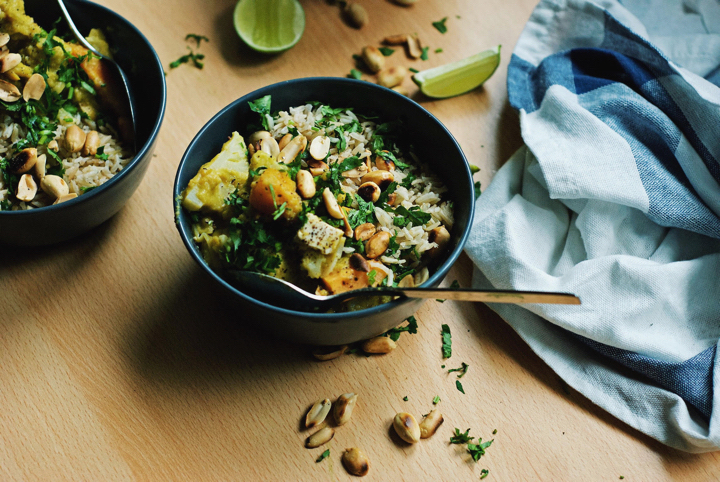
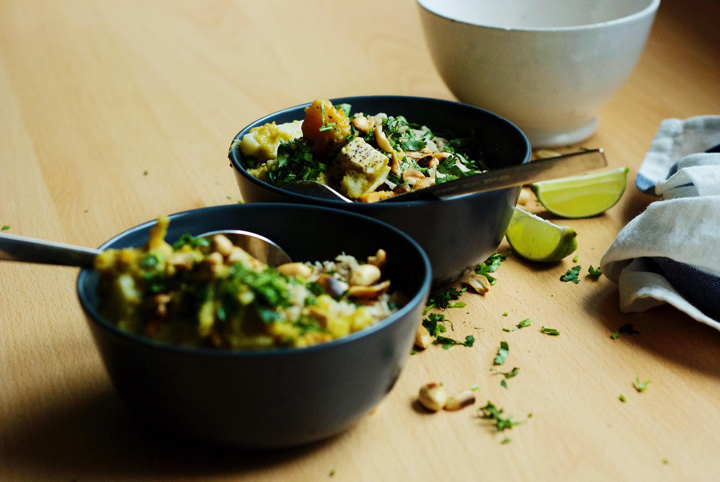
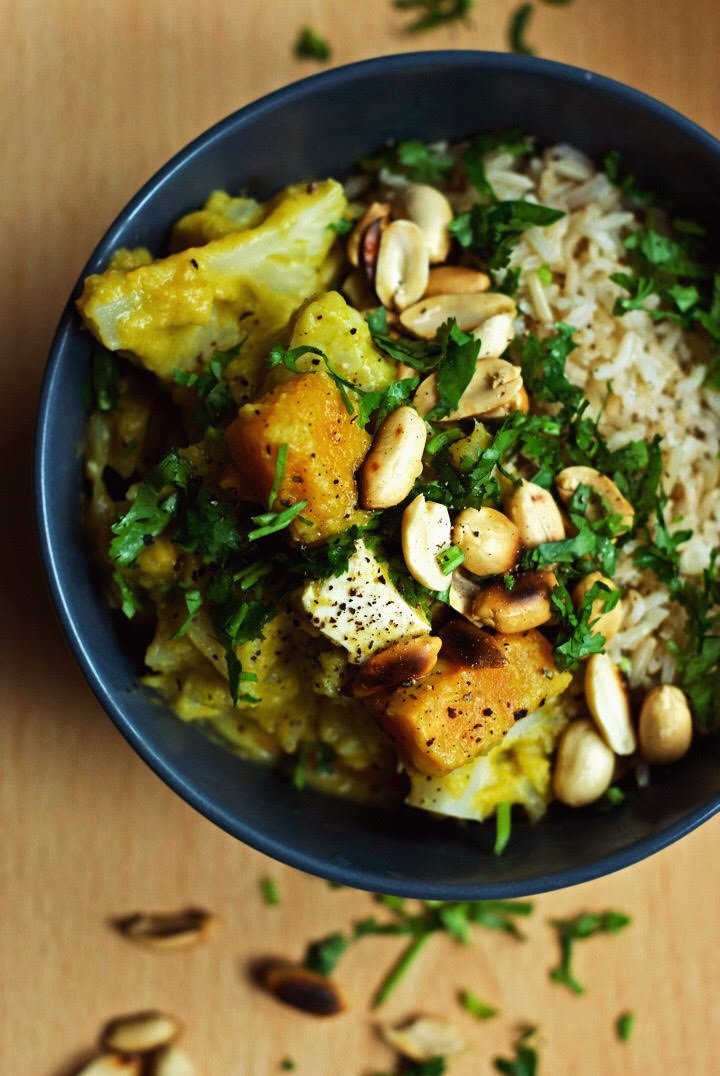
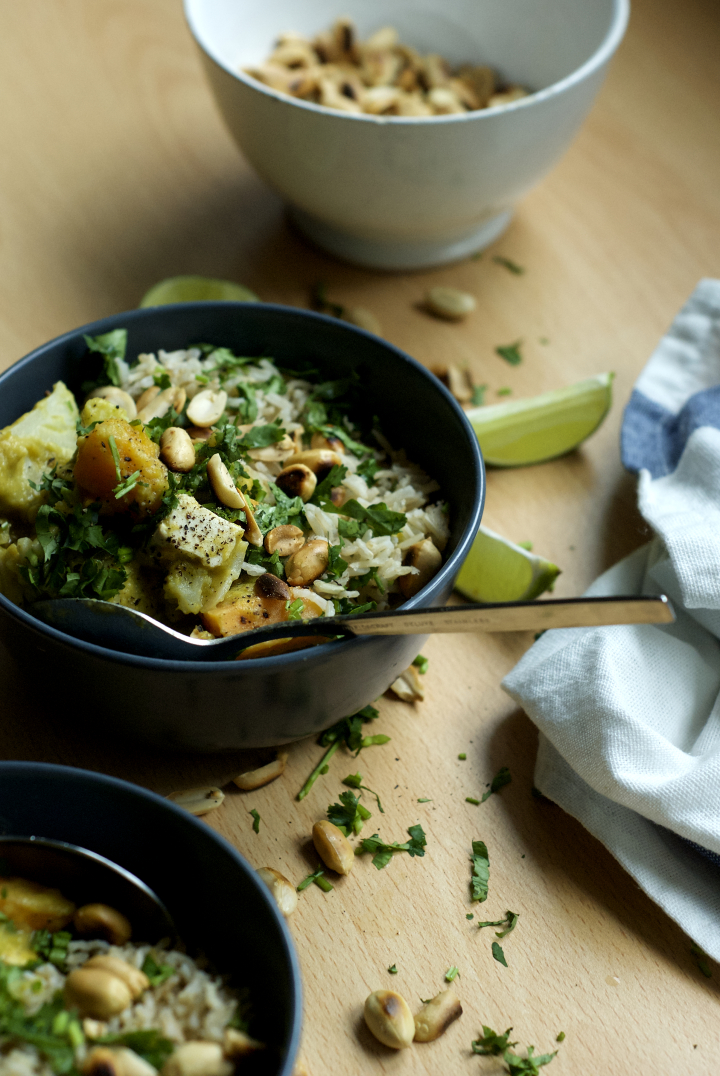
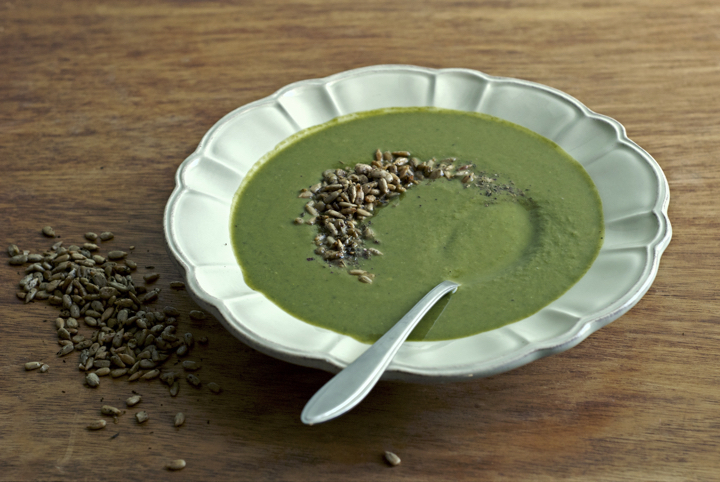
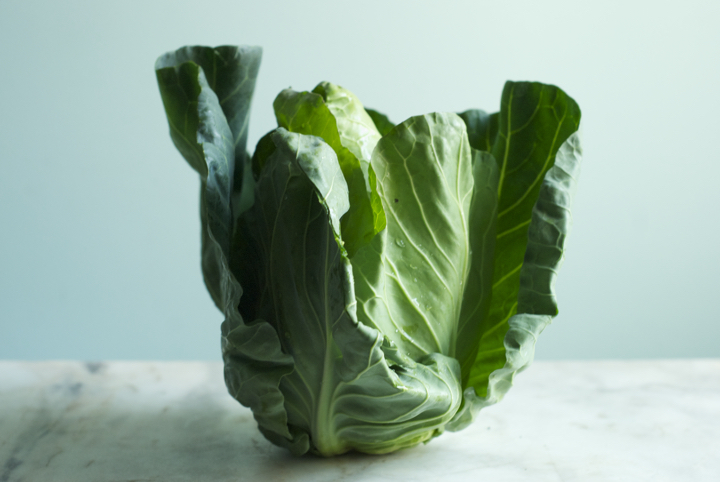
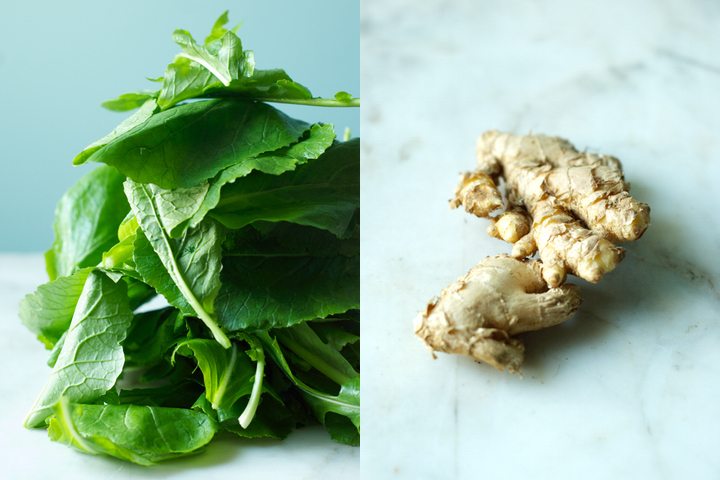
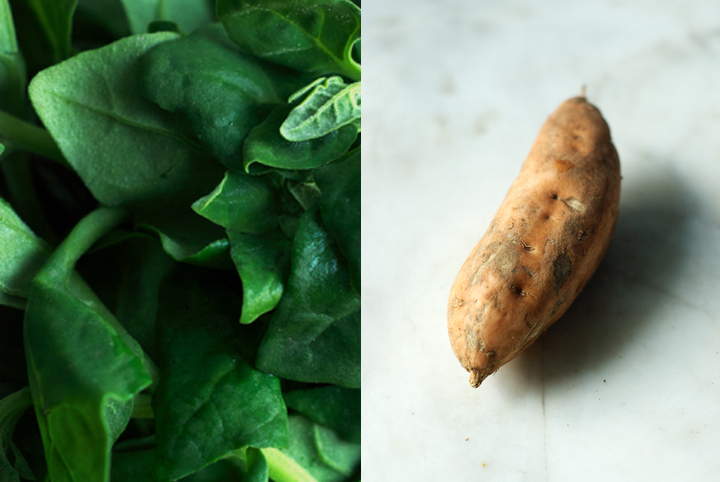
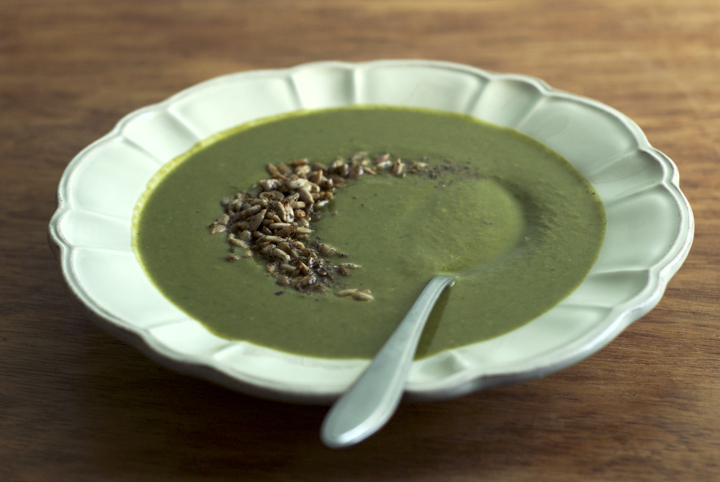
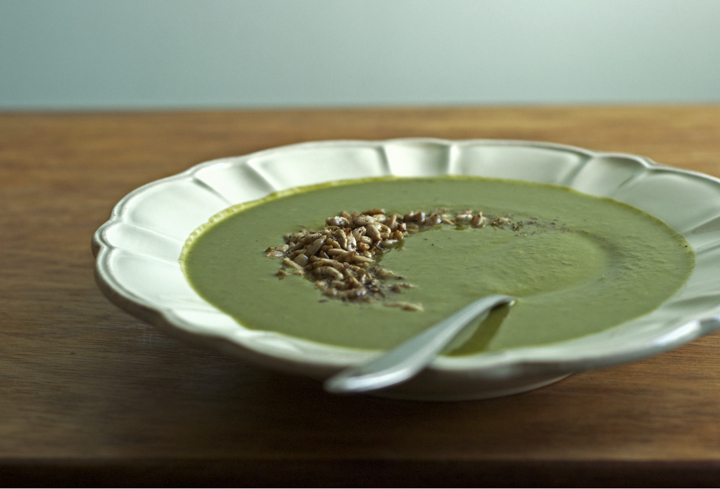
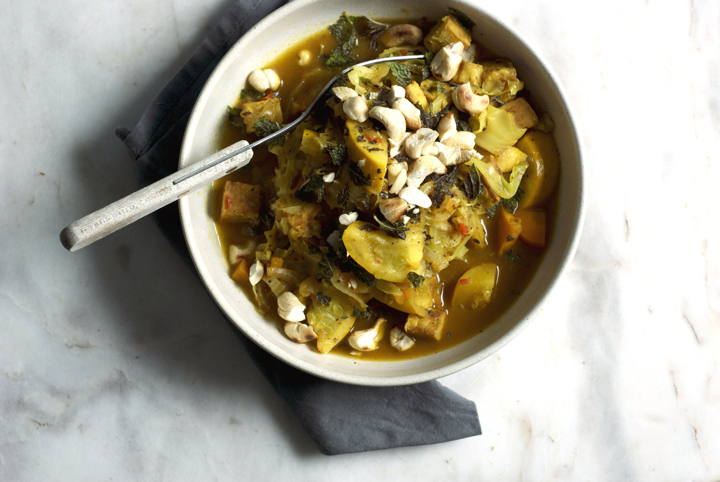
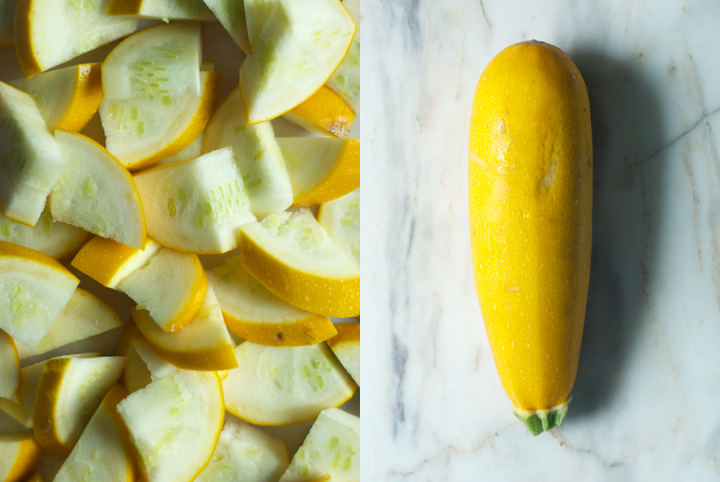
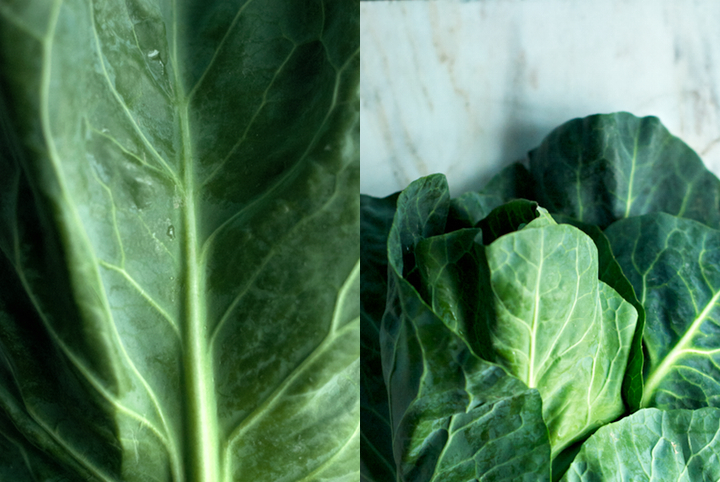
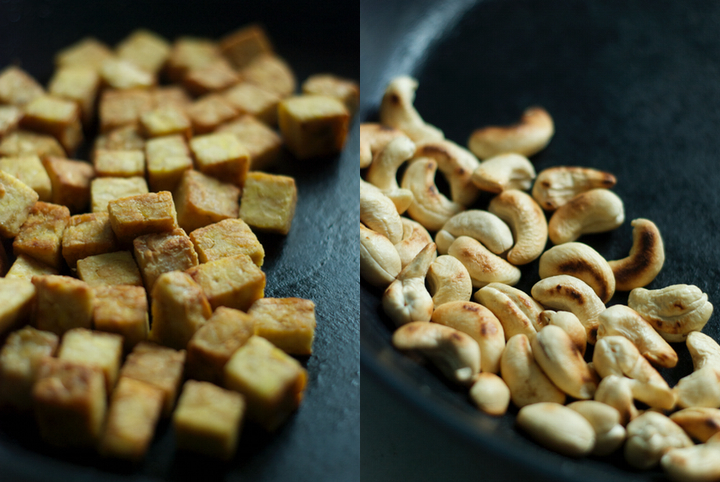
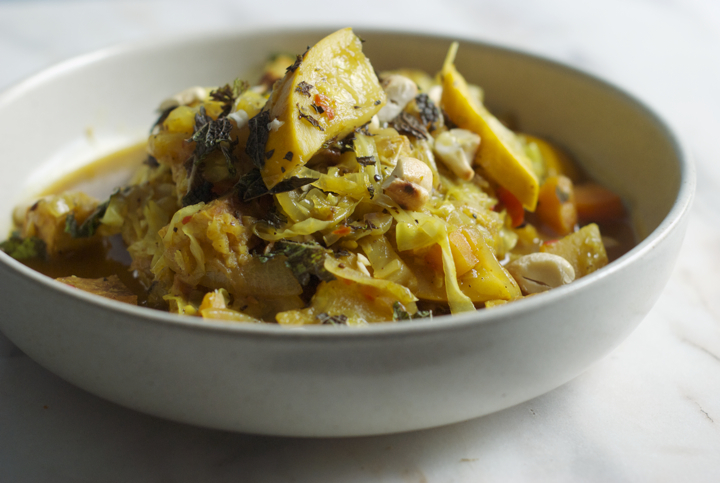
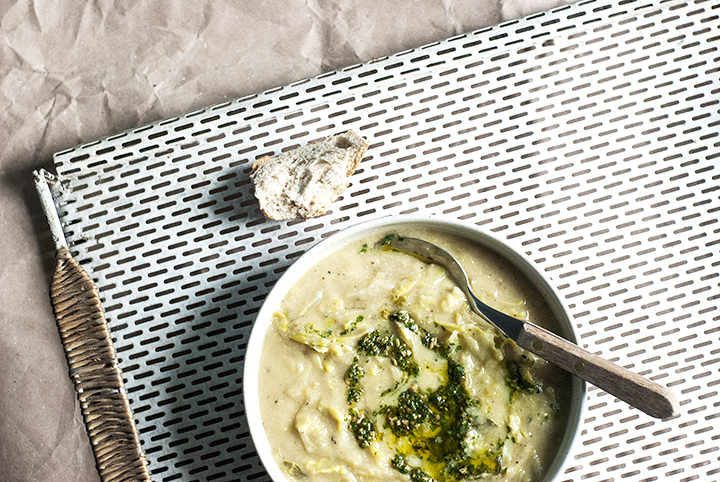
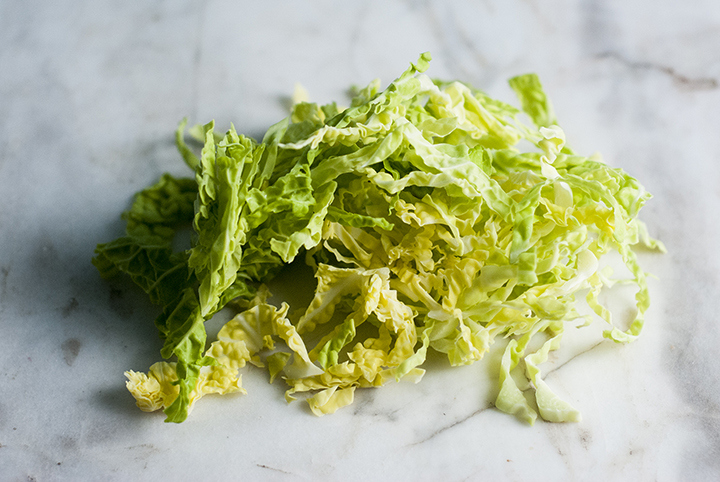

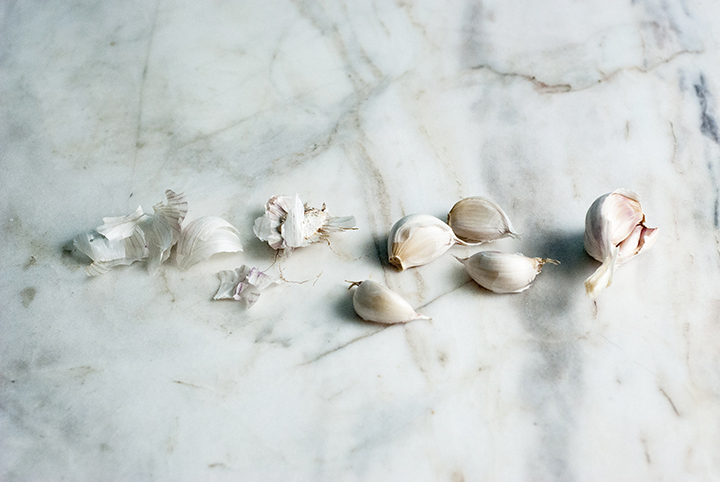
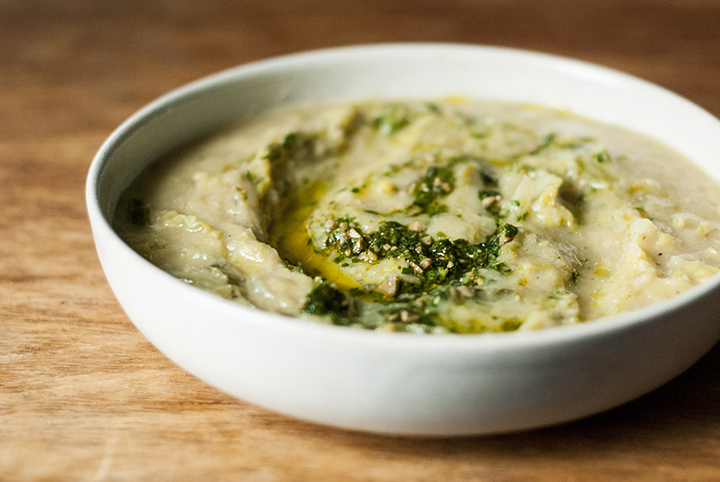
4 comments